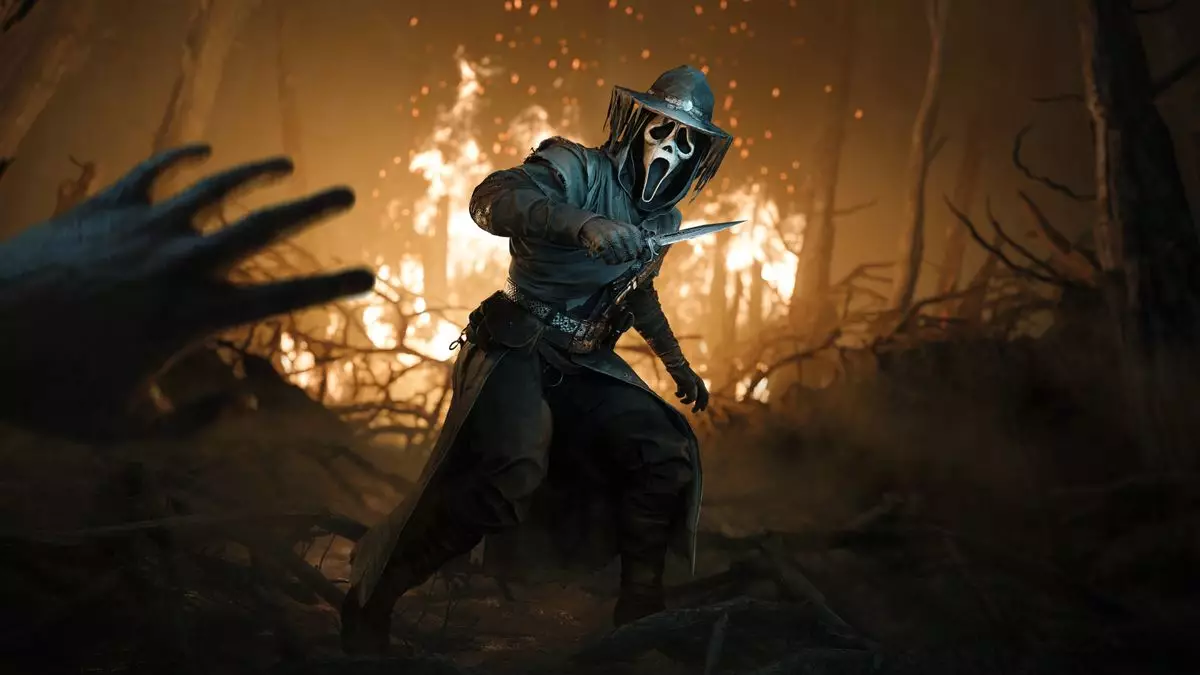In the gaming industry, collaborations and crossovers between different franchises have become increasingly popular, striving to attract diverse audiences and enhance player engagement. However, when such pairings draw from starkly contrasting genres or narratives, they can also evoke significant backlash from dedicated fan bases. This phenomenon is particularly evident regarding Crytek’s recent decision to integrate the Ghostface character from the “Scream” horror franchise into their multiplayer shooter, Hunt: Showdown. The backlash surrounding this Ghostface Rampage DLC highlights a growing tension between honoring established lore and delivering experiential entertainment.
The Premise Behind Hunt: Showdown
Hunt: Showdown distinguishes itself as a multiplayer first-person shooter set in an alternate, dystopian version of the 1890s Colorado. With a unique blend of PvE and PvP elements, players hunt down monsters while contending with other players. The game’s dark atmosphere is enhanced by a rich narrative and a tapestry of supernatural lore intertwined with historical themes. This distinctive setting fosters immersion, allowing players to feel fully enveloped in a world filled with danger and suspense.
However, when an iconic character like Ghostface, whose origin lies in a 1996 horror film set in the fictional town of Woodsboro, California, is dropped into this historical mélange, it has caused a stir among the community. Critics question how the essence of Hunt: Showdown can endure when juxtaposed with a figure so thoroughly rooted in a contemporary narrative that appears entirely dissonant from the gritty atmosphere of the game.
Upon unveiling the Ghostface Rampage DLC, Crytek faced a deluge of criticism. Many players expressed concern that such crossovers threaten the thematic integrity of the game. With a core player base that values immersion and continuity, the decision to feature a modern horror icon in the wilds of 1895 Colorado raised eyebrows and prompted fears about the direction of future DLCs. Players wonder if this opens the door to additional characters unaligned with the game’s setting or tone.
In an effort to temper this unrest, Crytek released an extensive statement via Twitter. While the tweet’s length was notable, many players interpreted it as skirting around the heart of the matter. Crytek maintained that their creative collaborations were intended to seamlessly blend new characters into the Hunt narrative, thereby enriching the existing lore. They defended their choices by asserting that Ghostface could be reimagined as a mythic figure whose influence transcends time and setting. The assertion that the Ghostface Hunter represents an ageless persona further complicates the discourse; it appears to overlook the specific narrative foundation that supports the authenticity of the Hunt universe.
Entertainment vs. Lore: A Divided Community
Players grapple with the question of whether a rich narrative must always be prioritized over pure enjoyment. While some fans vehemently oppose the union of Ghostface and Hunt: Showdown, others maintain a more flexible approach to gameplay. A degree of fun can often supersede concern for lore accuracy, as evidenced by the inclusion of various characters across different gaming franchises. However, truly engaging experiences often arise from balanced integration—something that Crytek must navigate carefully in future collaborations.
As a devoted fan of the Scream franchise myself, I find value in lighthearted crossovers when executed thoughtfully. Yet, it raises pertinent inquiries about the game’s evolution and long-term vision. As players invest emotionally into a game’s narrative and world, any decision that feels out of alignment can lead to disenchantment and skepticism about developers’ future intentions.
Crytek’s Ghostface Rampage DLC serves as a case study in the increasingly complicated arena of game development, where the balance between creative freedom and community expectations becomes ever more critical. Game developers must consider how their choices resonate with existing players while also engaging newcomers. In an age where audience feedback spreads rapidly through social media channels, navigating these pivotal conversations becomes essential.
Ultimately, the infusion of cross-genre characters can introduce exhilarating novelty for players, but they must be rooted within the game’s thematic core to maintain player investment. As fans weigh the merits and missteps of Crytek’s decisions, the future of Hunt: Showdown—and potentially other games pursuing similar paths—hangs in the balance, awaiting the developers’ response to their community’s voices.

